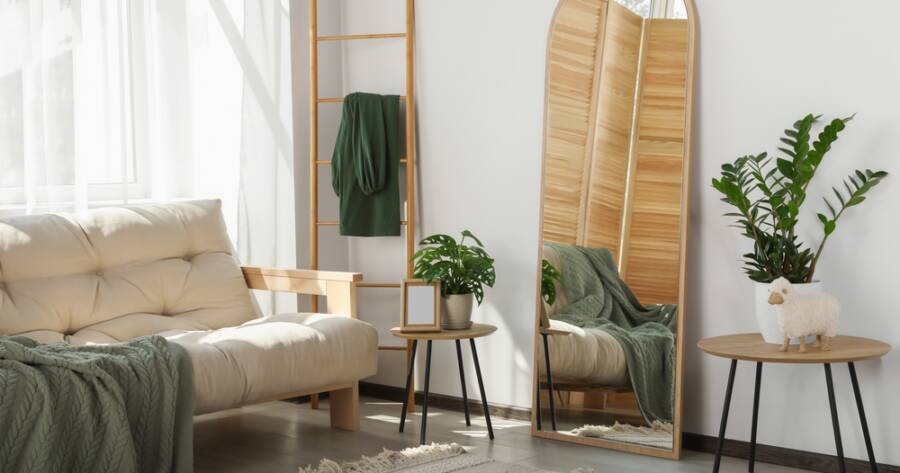A small room doesn’t have to feel cramped or closed in. With a few smart design tricks, you can transform tight spaces into open, airy, and functional areas that feel far more expansive than they are. From reflective surfaces to thoughtful furniture choices, little adjustments can go a long way. Making the most of every inch while keeping things stylish is all about working with what you have– renovation required.
Embrace the Power of Mirrors
Mirrors are one of the simplest ways to visually enlarge a small space. They reflect both natural and artificial light, instantly brightening the room and giving the illusion of more depth. A large wall mirror placed across from a window can double the sense of openness and bounce light around the space.
Don’t stop at one—mirror panels, mirrored furniture, or even mirrored backsplashes can amplify the effect. For added impact, try framing mirrors in a style that complements your decor. Mirrors also draw the eye outward, tricking the brain into perceiving more room than actually exists.
Make the Most of Vertical Space
When square footage is limited, think up, not out. Vertical lines naturally elongate a space, making ceilings feel higher and rooms feel more open. Tall bookcases, floor-to-ceiling curtains, and vertical shiplap or paneling can all enhance this effect while offering storage or style.
Wall-mounted lighting, hanging plants, and vertical artwork also help pull the gaze upward. Consider using stackable storage or furniture that draws attention to the height of the room. By emphasizing vertical elements, you free up valuable floor space and create a sense of balance and lift.
Use Color Psychology to Your Advantage
Color plays a huge role in how a room feels. Light, cool shades like soft blues, warm whites, and gentle greys reflect more light and open up a space. These hues help walls recede visually, giving the illusion of a wider area. Painting the ceiling a slightly lighter tone than the walls can also make the room feel taller.
That said, don’t be afraid to use darker tones strategically. A deep-colored accent wall or dark trim can add contrast and depth when paired with otherwise light surroundings. The key is balance—choosing a cohesive palette that enhances space rather than overwhelms it.
Choose Multipurpose Furniture That Works Smarter
Bulky, single-use furniture can make a small room feel overcrowded. Instead, opt for pieces that serve multiple functions, like an ottoman with hidden storage, a drop-leaf table, or a bed with drawers underneath. Furniture with exposed legs or transparent materials (like acrylic or glass) also helps create the feeling of openness by allowing light to pass through and under.
Scale matters too. Avoid oversized couches or heavy pieces that dominate the room. Instead, look for sleek, modular designs that suit your space. Multipurpose furniture allows you to live more comfortably without sacrificing style or function.
Create a Flow With Thoughtful Layout and Lighting
Even the smallest rooms benefit from a layout that feels intentional. Avoid blocking sight lines with large furniture or cluttered arrangements. Instead, keep walkways clear and allow natural light to filter in unobstructed. Arrange furniture around focal points—like a window, fireplace, or statement piece—to guide the eye and establish a sense of flow.
Layered lighting is also key. Combine ambient, task, and accent lighting to give the room depth and flexibility. Well-placed sconces, lamps, and pendant lights make the space feel lived-in and comfortable while giving the illusion of more volume.
Make Small Spaces Feel Like a Big Win
A compact room has the potential to feel cozy, stylish, and surprisingly spacious with just a few thoughtful changes. By leaning into techniques like vertical design, clever color choices, reflective surfaces, and dual-purpose furniture, you can maximize every inch. It’s not about having more space—it’s about using the space you have in smarter, more beautiful ways. A well-planned room, no matter the size, always makes a lasting impression.

